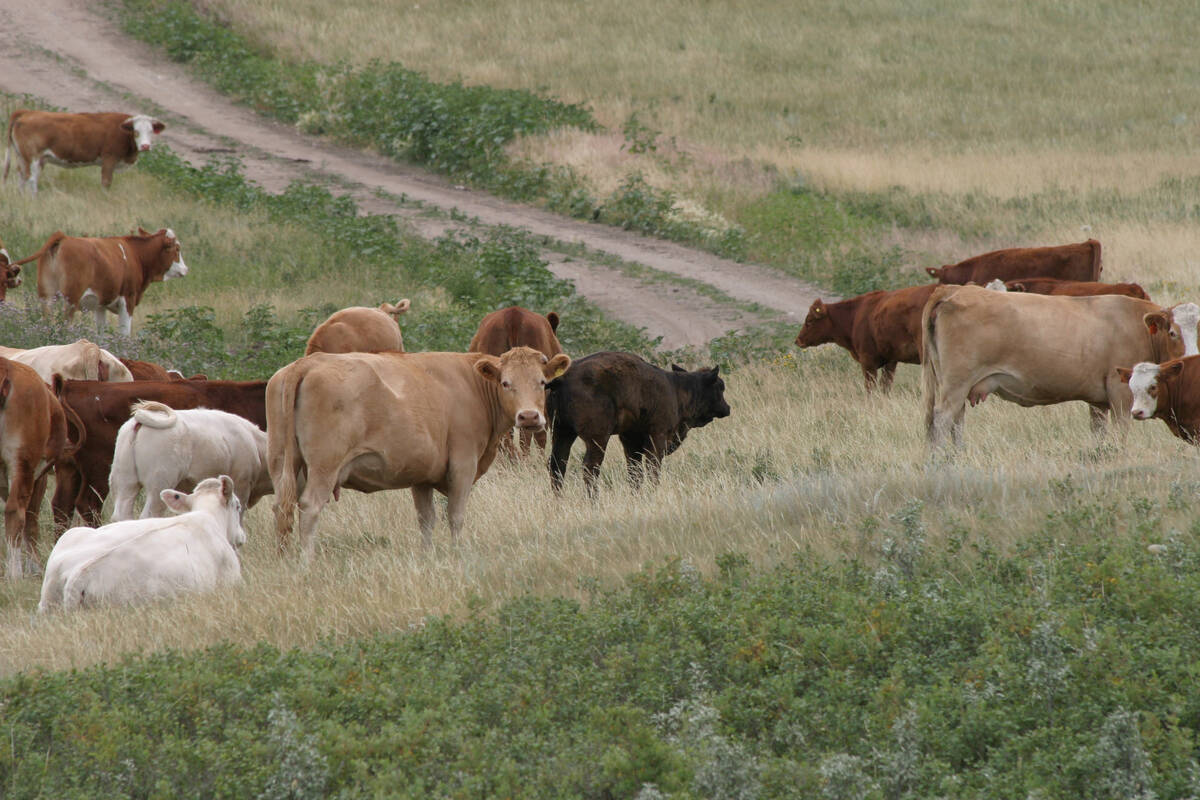This cattle market information is selected from the weekly report from Canfax, a division of the Canadian Cattlemen’s Association. More market information, analysis and statistics are available by becoming a Canfax subscriber by calling 403-275-5110 or at www.canfax.ca.
Fed prices steady
The average fed steer price reached $149.05 per hundredweight last week, up 15 cents from the previous week. Fed heifer prices averaged $148.19, up 74 cents from the previous week.
Fed prices have averaged in the upper $140s per cwt. for the past five weeks. U.S. fed prices strengthened relative to the Alberta fed market. On a cash to cash basis, Alberta fed prices are at an estimated $5 per cwt. discount to the U.S. market.
Read Also

Canfax cattle market report – August 28, 2025
The Canfax cattle market report for August 21, 2025. Fed & feeder cattle prices, butcher cow trends, and cutout market insights.
Alberta fed prices have been at a discount to the U.S. market for the past five weeks.
Dressed sales mostly ranged from $248-$250 per cwt. delivered. Cattle that were bought last week were being scheduled for delivery during the weeks of Dec. 10 and Dec. 17.
Last week, fed Holstein bids were about $10 per cwt. back of beef cattle, which is fairly standard. Instead of taking a negotiated cash bid, some producers opted to sell their cattle on a formula price. These formula cattle are priced off the Canfax average based on the week those cattle would be delivered to the plant.
For the week ending Nov. 17, it appears one plant worked only four days. Given how strong packing margins have been, this lost day might be made up on a future Saturday.
The average increase from second half low to high stands at 16 percent for the past 10 years, except for 2008. This year, fed prices are not expected to see a historical rally of 16 percent. However, in five out of the past six years, second half highs have been established during December.
For now, second half highs (in July) stand at $154.65 per cwt. There is a good chance the July fed price will be overtaken in December.
This summer there were cases where grass cattle were placed in feedlots one to two months earlier than normal. Given that early movement, supplies may not tighten as much between fed calves and yearlings.
Cow price drops
Slaughter cow prices were sharply lower last week by $4.50 per cwt. as ample offerings continued to come to auction. D2 cows averaged $74 per cwt. and were $10.50 per cwt. lower than one year ago. D3 prices were $5.30 per cwt. lower to average $63.50.
Dressed cow bids have softened to around $147-$152 per cwt. delivered. Butcher bull prices slid almost $4 per cwt. lower to average $87.28 per cwt.
Western Canadian non-fed slaughter for the week ending Nov. 17 dipped 14 percent lower to 8,774 head. Year to date western non-fed slaughter was 13 percent larger at 348,199 head.
Western non-fed slaughter was expected to realign significantly larger this week when the five-day harvest resumed. Large auction volumes are anticipated again for this week, and supplies will again outpace demand.
Beef trade
U.S. cut-out values were fully steady last week with generally moderate demand observed on a moderate offering. Choice traded at US$213.69 on average and Select was at $198.52.
The U.S. Department of Agriculture October cold storage report indicated beef stocks were 1.6 percent larger than the previous month and October last year. U.S. steer carcass weights for the week ending Nov. 10 were five lb. larger than the previous week, averaging 904 lb. and are two lb. heavier than a year ago.
Canadian AAA cut-out values for the week of Nov. 9 were C$269.06. AA cutouts for the same week averaged $256.17.
Feeder price mixed
Alberta feeders traded mixed last week with heifer prices trending fully steady and steers easing $1.50 per cwt. lower. Stocker calves less than 400 pounds saw prices realign modestly lower last week. Good demand was observed on calves from 400-600 lb., and prices trended fully steady to $4.50 per cwt. higher than the previous week.
Steer calves from 600-800 lb. were generally $2-$3 per cwt. lower than the previous week, and similar weight heifers traded mostly steady to $1 per cwt. lower. Large steers over 800 lb. slipped $2-$6 per cwt. lower than the previous week on varied lot size and quality.
More replacement quality heifers were on offer this last week, and heavier heifer prices trended mostly steady. Auction volumes were 25 percent lower than the previous week at 61,640 head and were generally steady with the same week last year.
Year to date auction volumes were down one percent to 1,505,660 head. The USDA reports that Canadian feeder exports to the U.S. for the week ending Nov. 10 were modestly larger than the previous week at 2,482 head, and year to date were 59 percent larger, totalling 175,144 head.
Since May, Alberta monthly auction volumes have been trending larger than the five-year average and year ago. November auction volumes will likely be lower than last year. Auction offerings will tighten moving toward year end, and peak fall volumes are behind us.
















